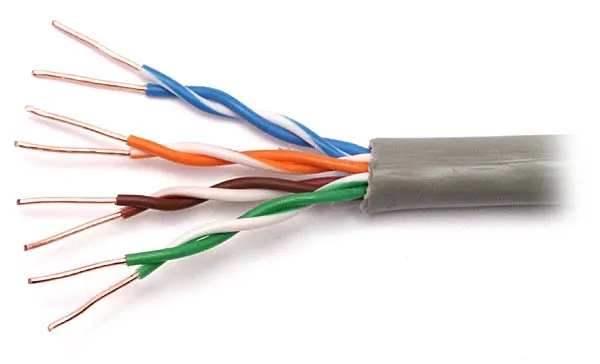
Unshielded Twisted Pair (UTP) Cables Explained
Unshielded Twisted Pair (UTP) cables are a backbone of modern network cabling, offering an affordable and efficient solution for data transmission in many residential and commercial settings. In this article, we explore the structure, advantages, and common applications of UTP cables to help you understand why they remain a popular choice for networking and telecommunication.
What Are UTP Cables?
UTP cables consist of pairs of wires twisted together without any additional shielding. This design minimizes electromagnetic interference (EMI) by canceling out noise between adjacent wire pairs. UTP cables are widely used in Ethernet networks, telephone systems, and various other data communication setups. Their unshielded nature makes them lightweight, flexible, and easy to install, which is a key reason for their popularity in both structured cabling and home networking.
How Do UTP Cables Work?
The performance of UTP cables lies in their simple yet effective design:
- Twisted Pair Design: Each pair of wires is twisted at a specific rate to reduce the effect of external electromagnetic interference.
- Cost Efficiency: Without the extra shielding, UTP cables are less expensive to produce, making them a budget-friendly option for network installations.
- Ease of Installation: The flexible, lightweight nature of UTP cables allows for quick and easy installation in a variety of environments.
This combination of design elements makes UTP cables ideal for high-speed data transfer and reliable connectivity.
Types and Categories of UTP Cables
UTP cables are available in several categories, each designed to support different data transmission speeds and bandwidths. Common categories include:
- Cat3: Primarily used for voice transmission and low-speed data.
- Cat5: Supports data speeds up to 100 Mbps, making it suitable for basic networking needs.
- Cat5e: An enhanced version of Cat5, optimized for speeds up to 1 Gbps and reduced crosstalk.
- Cat6: Capable of handling data rates up to 10 Gbps over short distances, ideal for modern high-speed networks.
- Cat6a: Offers improved performance and reduced interference, suitable for enterprise environments.
Selecting the right category of UTP cable is crucial to match your specific networking requirements.
Advantages of UTP Cables
UTP cables offer numerous benefits that make them a preferred choice for many installations:
- Affordability: Compared to shielded cables, UTP cables provide a cost-effective solution for extensive network cabling.
- Flexibility: Their design allows for easy installation in tight spaces and complex network layouts.
- High-Speed Data Transfer: With proper category selection (e.g., Cat6 or Cat6a), UTP cables can support high-speed data transfer necessary for modern applications.
- Low Maintenance: UTP cables generally require minimal upkeep, reducing long-term maintenance costs.
These advantages make UTP cables suitable for a wide range of applications, from small office networks to large-scale data centers.
Common Applications of UTP Cables
Due to their versatility and efficiency, UTP cables are used in various environments:
- Home Networking: Ideal for connecting computers, routers, and smart home devices.
- Business Networks: Employed in corporate LANs (Local Area Networks) for reliable high-speed connectivity.
- Telecommunications: Widely used in telephone systems due to their clear voice transmission capabilities.
- Security Systems: UTP cables can be found in CCTV and other surveillance setups where stable connections are critical.
Each application benefits from the UTP cable's ability to reduce interference while maintaining a robust data signal.
Installation and Maintenance Tips
Proper installation is key to maximizing the performance of UTP cables:
- Follow Standards: Ensure that cable installations comply with industry standards like TIA/EIA for optimal performance.
- Avoid Bends: Minimize sharp bends in the cable to prevent signal loss.
- Use Quality Connectors: High-quality connectors and proper termination can significantly improve the reliability of your network.
- Regular Inspections: Periodically check cable installations for wear and tear to avoid future issues.
By following these guidelines, you can ensure that your UTP cable network remains efficient and reliable over time.
Conclusion
Unshielded Twisted Pair cables continue to be a cornerstone of network cabling due to their cost-effectiveness, flexibility, and reliable performance. Whether you’re setting up a simple home network or a complex business infrastructure, understanding the features and benefits of UTP cables is essential. With a variety of categories available, you can choose the right cable to meet your specific data transmission needs and ensure your network operates at peak performance.